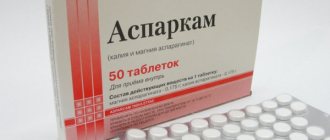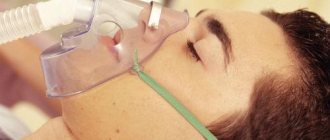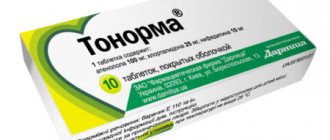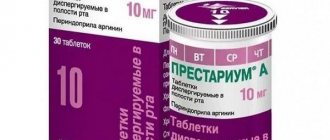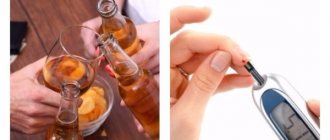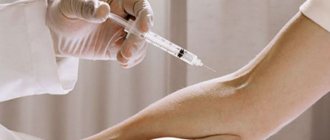The well-known “120 over 80” is only a small part of what we should know about normal blood pressure.
In fact, such pressure is already considered prehypertension. This is what the American Society for the Study of Arterial Hypertension says. And these are not the whims of foreign specialists. Russian doctors confirm that the risk of atherosclerotic vascular damage begins to increase when blood pressure (BP) goes beyond 115/75.
The modern classification of blood pressure looks like this:
- normal blood pressure - 115/75
- prehypertension - 120/80
- hypertension - 140/90
- hypertension I degree – 140/90 – 159/99
- stage II hypertension – 160/100 – 179/109
- stage III hypertension - 180/110 and above
If you have high blood pressure, then continue reading. Next we will talk about the causes and treatment.
The nuances of measuring pressure
Now we will talk about important details when measuring pressure. It is important to know this in order to see a doctor in time or not to panic over trifles.
Measuring pressure on different hands
Blood pressure readings may vary depending on which arm the measurement is taken on. This difference can reach up to 15 mm. rt. Art. As a rule, these are just measurement errors, especially for electrical appliances. But if the difference is higher than 15, then consult your doctor - this may be caused by stenosis of the subclavian artery. This means that an atherosclerotic plaque has appeared in the artery, which impedes blood flow.
Blood pressure measurement while lying and standing
If you measure the pressure while lying down and then ask the person to stand up, you can observe a slight decrease in blood pressure. But if the pressure drop is more than 20 mm. rt. Art. - this may be orthostatic hypotension. This is not an independent disease, but a signal of a circulatory disorder. In this case, you should also consult a doctor.
Doctor's blood pressure rises
It happens that people measure their blood pressure at home - everything is fine, but when they come to see a doctor - the readings are elevated. This is called "white coat syndrome." In this case, Holter monitoring should be prescribed - this is when pressure measurements are taken throughout the day, and then the average value is displayed. Based on the results obtained, doctors already draw conclusions whether there is a disease or not.
Even if the pressure is normal
About 40% of people have “latent hypertension” - this is when the pressure at a doctor’s appointment is normal and the disease is asymptomatic. But if you do daily blood pressure monitoring, the average values will show increased blood pressure. Such people live and do not suspect anything, but are at increased risk of a heart attack.
Effect on hypertension
Fasting for hypertension is allowed by doctors, but it is important to enter this state correctly. Before “settling down” on dry abstinence from food, you are required to take a diet course. Then blood pressure will not give a sharp jump.
One of the traditional methods of treating hypertension is therapeutic fasting. By adhering to it, you can restore blood circulation in the capillaries of those who suffer from hypertension
The fast should be carried out for one day and monitor the body’s reaction, monitoring blood pressure readings every hour. The main effect of fasting is to lower blood pressure. The effect of the procedure lasts for a week if hypertension was essential.
Fasting for hypertension helps remove toxins from the body.
Hypertension is also more common in people who are prone to obesity. The method helps to lose extra pounds and normalize blood pressure readings. A strict diet for hypertension helps limit the intake of harmful foods and salt. It is salt that activates the receptors responsible for the production of hormones and enzymes that increase blood pressure.
Causes of high blood pressure
Psychological reasons
Doctors trace a clear connection between high blood pressure and the activity of our nervous system. Many even call hypertension “the disease of unreacted emotions.”
Increased blood pressure is a natural defense mechanism that is triggered in response to a stressful situation. This helped ancient people cope with danger. As soon as I saw a tiger in the bushes, all systems of the body became active, the pressure jumped... And thanks to a sharp spear, the tiger was defeated. The pressure has returned to normal.
Now we react to stressful situations in the same way, only they are completely different. They called you to the boss, and you understand that you will get punished for an overdue report. You walk, and the pressure has already increased significantly. It increased even more when they called you a fool and promised to fire you for the next mistake. But you can’t answer your boss—your position doesn’t allow it. You return to your workplace, and the pressure increases even more from fantasies about being fired. On the way home, you are still thinking about how you could answer.
Every day a modern person has a lot of situations when a stressful situation triggers the mobilization of the body's resources. But resolution did not occur either on the physical or psychological level. This is called “unreacted emotions.” In the West, this situation is called “essential hypertension” or hypertension of unknown cause.
Kidneys
To function normally, they need increased blood pressure. The kidneys give the order to our body to increase pressure, thereby ensuring a normal level of filtration.
It may happen that an atherosclerotic plaque settles somewhere in the renal vessels. It could appear due to the same hypertension. So the kidney, in response to this, promotes a powerful release of hormones and biologically active substances. It increases the pressure until it receives the required blood flow.
In this case, nothing can be opposed to the kidney - it has a “powerful gun”, and doctors have “small pistols”. It is because of this that high blood pressure is treated not only by cardiologists, but also by nephrologists.
Increased salt intake
Salt is NaCl, and an excessive concentration of Na ions causes them to accumulate on the walls of blood vessels. Sodium attracts water, which causes blood vessels to swell and contract. To ensure normal blood flow, the body is forced to increase blood pressure.
On average, we consume 12 g of salt per 24 hours - this is 2 times more than normal. And if you are over 50, have diabetes, kidney disease or cardiovascular disease, then you should not consume more than 4 g of salt per day.
It could also be:
- heredity
- overweight
- alcohol and cigarettes
- passive lifestyle
- diabetes
- hormonal pathologies
We will not go into all the reasons so as not to make the article too long. But if you still have questions about any of these points, write in the comments.
How to normalize blood pressure
DASH Meal Plan
Scientists have studied different diets to see which one is best for normalizing blood pressure. As a result, they developed an eating plan called DASH. This is literally translated as dietary measures that stop hypertension. In many ways, DASH coincides with the basic principles of proper nutrition and the Mediterranean diet:
- Restricting Total Calories Many articles have been written and hundreds of scientific studies have been conducted to prove that limiting your intake increases life expectancy and improves health. We will talk about this in more detail in the next article.
- Emphasis on vegetables and fruits This is important because they contain the fiber necessary for our body. It not only has an antitumor effect, but is guaranteed to lower blood pressure levels. From vegetables and fruits you will get potassium, which only 1% of people with hypertension consume in the required amount. Potassium also has a hypotensive effect, which means that it normalizes blood pressure. Vegetables and fruits are high in folic acid and flavonoids, which lower blood pressure and protect against cardiovascular diseases.
- Eat more fish Fish contains docosahexaenoic acid (DHA) and eicosapentaenoic acid (EPA). It has been scientifically proven that these substances normalize the functioning of the cardiovascular system and normalize blood pressure. Omega-3 fatty acids also help maintain cardiovascular health by participating in the regulation of blood clotting and vascular function.
- Low-fat dairy products This is an excellent source of calcium, which also helps normalize blood pressure. Low-fat products are recommended, because a large amount of milk fat can reduce the beneficial effect.
- Limiting salt, alcohol and meat It is especially important to avoid excess salt. We have already talked about the standards to which it is necessary to reduce its consumption. Alcohol - no more than one glass of wine, and meat no more than three times a week. Be sure to exclude fast food, chips and carbonated drinks from your diet.
- Eliminating trans fats from your diet Most harmful fats are found in baked goods - cookies, pastries and cakes are mainly prepared using cooking oil. Therefore, such products can contain up to 10% trans fats - this is up to 5 g per 100 g of product. Normally, you can consume up to 2 grams of such fat. Or better yet, 0. If you exceed your intake of trans fats, you risk increasing your risk of cardiovascular disease by a quarter.
Physical activity - aerobic training
Diet itself does not fully normalize blood pressure. For a good result, she needs her main ally - physical activity.
We are mainly talking about moderate aerobic exercise - swimming, light jogging, brisk walking, exercise bikes, etc. Such physical activity normalizes blood pressure due to:
- moderate vasodilation
- cleansing due to changes in the biochemistry of the vascular walls
- reducing the risk of atherosclerotic plaque formation
Losing weight and giving up bad habits
Losing weight and giving up bad habits is easy if you start practicing therapeutic fasting. Or more precisely, fasting-dietary therapy (RDT).
This method has been proven effective in the fight against excess weight and bad habits for more than 30 years.
While undergoing a course of therapeutic fasting, you have the opportunity to eliminate junk food, cigarettes and alcohol for up to 7 days. This time is enough to lose up to 7 extra pounds, “reboot” your thinking and no longer return to bad habits.
Advantages and Disadvantages of Fasting
The main advantages that this technique offers are as follows:
- decrease in pressure and heart rate, unloading of the chambers of the heart. Blood pressure readings gradually return to normal;
There are cases in which refusing food will do more harm than good
- the economic benefit of the method, it does not require costs or, with a strict diet, reduces the cost of food;
- increased muscle tone, decreased fat deposits;
- improvement in overall well-being, the body removes toxins and waste that have accumulated over a long period and again becomes capable of accepting new food.
The disadvantages of combining fasting and hypertension are as follows:
- the technique is not suitable for everyone due to individual intolerance and stress caused by fasting;
- after the end of fasting, you can gain more weight than you had before treatment, and the numbers on the tonometer will increase;
- The technique cannot be used independently; an individual consultation with a specialist is required to select a diet.
Some experts are against the practice of fasting, because they can lead the patient into a depressed state, provide him with weakness and general loss of strength
Therapeutic fasting as a medical method has proven its effectiveness in the fight against hypertension
Unloading and dietary therapy, being an official medical technique, helps normalize blood pressure. The process looks like this:
- At the beginning of the course, blood pressure decreases;
- During fasting, profound changes occur at the level of ion exchange. The therapeutic effect is explained by the retention of potassium, magnesium and chlorine ions against the background of a relative loss of sodium;
- At the final stage of fasting, blood pressure sometimes drops below normal. But after cessation of fasting, blood pressure levels improve relative to those before fasting.
If you are interested in details, you can read an article about this in the scientific journal “Modern Science-Intensive Technologies.”
